Making Slate a Simple Choice - PODCAST TRANSCRIPT
June 25, 2024 at 12:00 p.m.Editor's note: The following is the transcript of a live interview with Morgan Cathey of READYSLATE®. You can read the interview below or listen to the podcast.
Intro: Welcome to Roofing Road Trips, the podcast that takes you on a thrilling journey across the world of roofing. From fascinating interviews with roofing experts to on the road adventures, we'll uncover the stories, innovations and challenges that shape the rooftops over our heads. So fasten your seat belts and join us as we embark on this exciting roofing road trip.
Karen Edwards: Hello and welcome to another episode of Roofing Road Trips. I'm your guest host Karen Edwards, and I'm really excited about today's topic, because we are talking to Morgan Cathey from Readyslate and we're going to talk about this really unique new product that is authentic slate, easy to install and has so many cool features. Morgan, welcome. Thanks for being here today.
Morgan Cathey: Thanks, Karen. Thanks for having me. Again, like you said, my name is Morgan. I'm with Readyslate. And Readyslate by Cupa Pizarras is the manufacturing company.
Karen Edwards: What's your role there at Readyslate? What do you do?
Morgan Cathey: So I'm the product manager for the US. Basically in charge of everything that has to do with this particular product throughout the US and Canada.
Karen Edwards: All right, so let's talk a little bit about why slate is such an amazing choice as a roofing product.
Morgan Cathey: Well, to start off with, slate is one of the oldest known materials for roofing in the world. So there's roofs that are hundreds of years old around the globe that have this product on there. So it's known for its longevity. It's known for its fire resistance and mold resistance. It's known for being very low maintenance, environmentally friendly, being that it's a natural product, it's a rock that's pulled out of the ground.
In the US, it's a little bit different than a lot of the standard products we use today. So we usually see it have excellent curb appeal, just because it's different and it looks very, very nice. Increased home value, and then just the longevity of the product. So depending on your installation, you can see slate roofs lasting anywhere from 50 to 200 years.
Karen Edwards: Wow. Yeah, that's a really long time. And slate's natural, right? It's a product from the earth.
Morgan Cathey: Correct.
Karen Edwards: And there's not a lot of manufacturing or pollution in making the slate. So I think that's got a real appeal for folks.
Morgan Cathey: Absolutely. And Cupa Pizarras is actually a carbon-neutral company, which isn't incredibly difficult to do with slate, but especially if you compare us with some of the asphalt-based products that are out there and how much pollution is generated producing those products, we are very environmentally friendly.
Karen Edwards: All right, so what are some of the challenges that contractors face when they're working with slate?
Morgan Cathey: The number one thing I hear over and over is just labor. I think you interviewing people from time to time in the roofing industry, you probably hear problems with labor over and over. And that's really something that's even magnified with slate is just the fact that you have ... It's a skilled labor, and it's something that's not maybe the most popular in the United States.
So we have a very difficult product to install compared to some of the shingles and stuff that are out there that are fairly simple to install. And we also have a labor shortage that we're not able to find the labor to actually install that. There's not a lot of trade-based schools that teach how to install slate in the United States. In fact, if you look online and stuff, most of those are in Europe.
Karen Edwards: Yeah.
Morgan Cathey: So it's kind of difficult to find.
Karen Edwards: Yeah, it's true. And I think at the roofing expos, you'll see there's almost always a booth promoting slate, but a lot of the guys that are working and demoing and working with it are from Europe. It's really hard to find that skill here in the U.S.
So I'm really curious, for those listening, we're saying Readyslate, but we want to explain what this is. So it is all natural, real slate and it's hand-formed?
Morgan Cathey: Correct. It's actually hand split in Spain. So it's produced fully in Spain and shipped over here to the United States. But it is hand split, so it's usually second and third generation slate splitters that are over there and they take a block of slate and you tell them you want five millimeter product or a seven and a half millimeter product and they'll take a hammer and a chisel and split the slate to that size.
Karen Edwards: Wow.
Morgan Cathey: Yeah.
Karen Edwards: That's incredible. And then just to help people understand how when this shows up on the job site, we're not talking about individual slate tiles. Right? This is almost prefabbed for you.
Morgan Cathey: Correct, yeah. We would say panelized.
Karen Edwards: Okay.
Morgan Cathey: And the best way to describe it, if you can't see the product, is think of a shingle. It does have an asphalt base to it. Then you apply six pieces of real slate to it, so it comes in a panelized form.
Karen Edwards: Excellent. And then the installation ... Well, first of all, talk to me a little bit about how the idea behind panelizing it and making it easier. How did that come about?
Morgan Cathey: Sure. So the patent for Readyslate is over a decade old, actually. So it's a thought process that came out of our RD department with Cupa Pizarras, and Cupa Pizarras is the largest slate manufacturer in the world. Recently with a recent acquisition we just have, we're up to 70% is the new estimated number of the world's slate.
Karen Edwards: Wow.
Morgan Cathey: So very good chance that if a slate roof is on and you see a slate roof anywhere in the world, there's a good chance that Cupa Pizarras has actually produced it.
So in the R&D department, they're trying to figure out a way that we can continue using slate and make it easier to install, especially with the structures in the United States. In the United States, we don't do a lot of block and stone based buildings where we can support the weight of traditional slate. Usually, you would have to request that when you're getting your home built. If you want to support traditional slate, that's a thousand pounds a square, you're going to need to have additional framing on the walls, on the roof, on everything really to support that kind of weight.
So this product came about when they were looking at that. How can we make it lightweight and still a great durable product and really capture the United States market? And that's what Readyslate is. It's [inaudible 00:07:06].
Karen Edwards: Okay. So how did you make slate more lightweight? Because slate is slate.
Morgan Cathey: So it has to do mainly with the overlap. And we would say headlap for roofing terms, I guess. But the overlap of the slate for Readyslate is only two inches. And if you compare that with traditional slate, traditional slate can be 12 inches, 60 inches. It really depends on the pitch and what size slate you're using, but it can vary. So when you increase the headlap, you're basically having double the amount of slate or close to it, double the amount of slate that's on the roof.
One of the common misconceptions, I guess, is that when we say lightweight is that we thin down the product and it's a lot thinner than traditional slate. It's actually not. So it's a standard slate for Europe. It's actually a little bit thicker than some of the slate produced here in the United States. So it's the United States standard is around a quarter of an inch. This comes in closer to a third of an inch or seven and a half millimeter.
Karen Edwards: Okay, interesting. And then it's just nailed down?
Morgan Cathey: Correct. It's nailed down. It's pre-punched. So it already has two nail holes in each piece of slate. So you're going to have six pieces, two holes, so you're going to need 12 nails per panel. And you would nail each one of those, yes.
Karen Edwards: So tell me a little bit about ... I was having a conversation with somebody recently and they thought slate was not a great material, because what if it gets hit with hail? But it's extremely hail resistant, isn't it?
Morgan Cathey: Correct, yes. With the backing product and the way we've designed this and the thickness and really increasing the thickness to be able to get a class four out of this product. So it's extremely hail resistant and one of the beauties about it is even if something, say a tree branch was going to fall on the roof and that's something that would have broken pretty much any type of material-
Karen Edwards: Right.
Morgan Cathey: ... you can actually take and replace one piece at a time with this product. So it's an easy, simple repair to this product, versus with a lot of shingles, you're trying to sometimes replace the whole slope.
Karen Edwards: Yeah, yeah. Because if it's been up there a while, you put a new piece up there, it's going to look quite different in terms of shingles, but not so with this product.
Morgan Cathey: Correct, yes. It's a non-fading product, so we can take the products that we have today and replace stuff that's been installed for quite some time. The quarries that these are coming out of, some of them are over 100 years old that the same quarry's been used to produce slate.
Karen Edwards: Oh, wow. Yeah. I mean, there's nothing better than the test of time, right?
Morgan Cathey: Correct, yeah.
Karen Edwards: And especially in Europe, you said this has been on for hundreds of years as a roofing product of choice.
I'm curious, we were just at a roofing expo last week. I saw you down in Florida.
Morgan Cathey: Right.
Karen Edwards: What do contractors want to know? What kind of questions are they asking you about this product?
Morgan Cathey: Well, first off, and almost probably 80% of the time I'd say they want to know, is it real slate? They think it's composite. They think it's one of the plastic products that is out there just by looking at it. So we have to drive that home. We have a new marketing campaign coming out, from rock to roof is what we call it.
Karen Edwards: Oh.
Morgan Cathey: Yeah. So it's really talking about taking the rock out of the ground and how we produce Readyslate. So it's going to be fun when that gets published.
But that's the number one question. "Is it plastic?" is usually what I get a lot.
So once we get past that, then they're usually ... They think it goes on piece by piece. We show them the panel where they're getting six pieces on at a time, and then it snowballs from there into a whole bunch of different questions on being lightweight, being hail resistant. Since with our Florida show, being obviously in Orlando in Florida, we got a lot of questions about hurricanes and do we have approval for high velocity hurricane zones, which we do.
Karen Edwards: You do, you said.
Morgan Cathey: Correct.
Karen Edwards: Yeah. Yeah, yeah. That's really important down there, because you're getting lots of wind, even just regular storms. And that's happening across the country, right?
Morgan Cathey: Absolutely, yeah.
Karen Edwards: We've got more wildfires it seems than ever, we've got ... And slate won't burn, right? Extremely fire resistant.
Morgan Cathey: Correct. Yeah, the slate product itself is extremely, extremely fire resistant. Yes.
Karen Edwards: So yeah, if you're in an area that is prone to wildfires and you may have embers flying around in the air, then you want a roofing material that is going to be able to resist and not catch fire should an ember blow onto the roof.
Morgan Cathey: Absolutely.
Karen Edwards: So tell me a little bit about the warranty, that if someone's going to install a Readyslate roofing system, what does the warranty look like?
Morgan Cathey: So the warranty for Readyslate, it's a limited lifetime warranty. It's fairly similar to a lot of the warranties that are out there. We really had some, I guess, difficulty from Cupa, coming from a European warranty to what required requirements for a US warranty. So it's nothing that's going to be really that much different than anything else that's out there.
However, from our testing, we think a lot of the stuff that we recommend with the products, such as using stainless steel or copper nails with the installation, we think that they're going to outlast the hot dip nails that are out there. So we think this is going to be a 50-year plus roof.
Karen Edwards: Wow. Yeah. So tell me a little bit about that. Do you have accessories that accompany the system? Underlayments? Let's hear a little bit about that.
Morgan Cathey: Sure. One of the beauties about the product, too, is the fact that it does not have any really standardized accessories that we would sell. You can pick stuff up off the shelf at your local roofing supplier for vents, for underlayment, mostly for nails. Usually somebody will have some stainless steel nails in stock, and so the drip edge and stuff like that would be fabricated locally. Usually one of the supplier partners will have a metal shop they partner with to be able to make some of the metals and the valley metals and that sort of thing.
But we really only sell just the Readyslate product itself. So that really drives down the cost when they're looking at comparable products to allow the contractor to be able to offer this at a very good value to the homeowner.
Karen Edwards: Nice. Yeah. And I was going to ask about training or support, or I'm sure you guys offer that. I'll tell people to go to the RoofersCoffeeShop.com directory for Readyslate, and there is an installation video on there that'll give you a great idea of what the installation looks like and how easy it is. But if someone does want some assistance, do you guys have that?
Morgan Cathey: We do, yeah. Currently, we're offering no-cost assistance and training for the roofing crews. It is extremely simple to install this product. I like to say over and over again that there's no gotcha moments that you're going to get in the middle of this installation and scratch your head and not be prepared for it. It's pretty well laid out in the installation guide that we have written down on our website as well as the videos that you mentioned there. And beyond that, we usually have at max a one to two-hour training on how to install the product and they're off from there.
Karen Edwards: So I'm curious, we talked about high winds and Miami-Dade and other approvals. A lot of times for a roofing system to be able to earn those ratings, maybe they have to use more fasteners or they have to use different patterns or you use this many nails versus this many nails. But you've got pre-punched holes, so regardless, it's not going to change. You're always using the same number of fasteners.
Morgan Cathey: Correct. And that was one of the surprises for me too, really getting down and doing a lot of the testing to get the approval for hurricane zones through the state of Florida, is that we didn't have to really beef up the installation process a whole lot more than it was already done currently. The nails are really the same.
The only thing I would say there would be they're going to require ring shank nails in the state of Florida versus smooth shank nails. But beyond that, I mean, there's very little that changes in the installation process.
Karen Edwards: Wow. Yeah. That's amazing. So how long have ... You said about 10 years ago, the idea came to be and how long has this been available in the U.S.?
Morgan Cathey: So in the U.S., it's only been available for about the last three, going on four, years, something like that. And we really started testing. They've sold in different countries. They sold down in Australia, they've sold in other places before this, before the U.S. But for the U.S., it's just been about three, four years.
Karen Edwards: And what's the reception?
Morgan Cathey: The reception is great, and that's one of the things I love about my job is that once it clicks in a contractor's head what this product is compared to the alternatives that are out there, that they see the value in it and they see that they can offer something that is extremely high quality and a very good product. And slate being something that, while it's attempted to be imitated, it's very hard to imitate a real slate roof when you look at it from the ground. And they're able to offer that at a very affordable price compared to some of the alternatives that are out there. We're usually right neck and neck with a lot of the specialty roofing market.
Karen Edwards: Oh, yeah. I would imagine that this would have some great applications for historical buildings, even though we don't have too many historical buildings in the U.S., we've got some. And a lot of times they want things to be authentic, like the original materials that were used. And then I know sometimes you do run into problems with the structure not being able to support the slate, so this sounds ideal.
Morgan Cathey: Correct, yeah. And we're seeing that, and sometimes it's not even the historical buildings themselves. Sometimes it is in a historical district and you want to build a new building, and they are going to require you to put slate on it. Well, this is a way that an architect can design to put this on, real slate on a building that's brand new and they can save some money on the structural requirements to do so.
Karen Edwards: Yeah. Yeah, that's fantastic. Now, I'm curious about colors and shades. Do we have multiple choices? Is it pretty much just that, when I think of slate, kind of grayish black color?
Morgan Cathey: Currently, we only offer the product in a charcoal color. We are looking at some alternatives and hopefully here very shortly I'll have some colors to announce. Then maybe we can do another podcast here.
Karen Edwards: Oh, yeah. Because, I mean, slate is just gorgeous. And when you do have those color variations, it can be just so nice and really make a home stand out and pop.
Morgan Cathey: Correct.
Karen Edwards: It adds curb appeal. I'm sure it adds value to the home, and you get a lot of happy homeowners, I'm sure.
Morgan Cathey: For sure.
Karen Edwards: Yeah. Well, we would love to hear about the colors when they come. Exciting stuff. But I also would just like to wrap up by just explaining, how do contractors purchase Readyslate? Where can they find it?
Morgan Cathey: So Readyslate's available at any of the national roofing supply houses, being ABC, SRS, Beacon, any of those guys or honestly anywhere where they buy roofing here currently. If we're not currently set up with that supplier, we'd be more than happy to get set up with them.
But for more information, if they need more information, they can always go to our website and with the readyslate.com and download our installation guide and really get in contact with somebody local that would be able to point them in the right direction.
Karen Edwards: Excellent. And I just want to encourage everyone listening to go to their website, go to their directory on RoofersCoffeeShop.com and check it out, because it's really, really cool, the concept and you can see it being installed and get a feel for, "Wow, yeah, I think I could do this." Right? And then you can add slate to your repertoire of products that you offer out there.
Morgan Cathey: That's it.
Karen Edwards: Morgan, wow. Thank you for being here. Thank you for sharing all the information about Readyslate and its history and the value that it brings for contractors and home and building owners. We're really excited. I'm excited to see more of it. And yeah, this was a great conversation.
Thank you all for listening out there. We want you to not miss a thing, so be sure to subscribe, follow us on social media and you can listen to other episodes of Roofing Road Trips wherever you get your podcasts. So thanks, Morgan, and we'll see you all next time.
Outro: If you've enjoyed the ride, don't forget to hit that subscribe button and join us on every roofing adventure. Make sure to visit RoofersCoffeeShop.com to learn more. Thanks for tuning in, and we'll catch you on the next Roofing Road Trip.


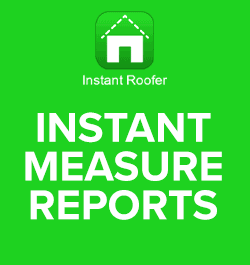










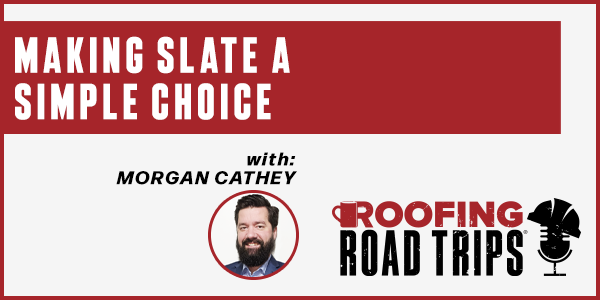
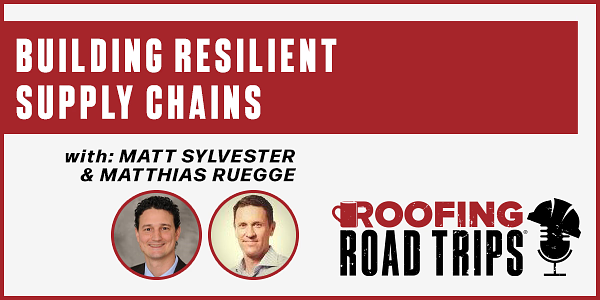
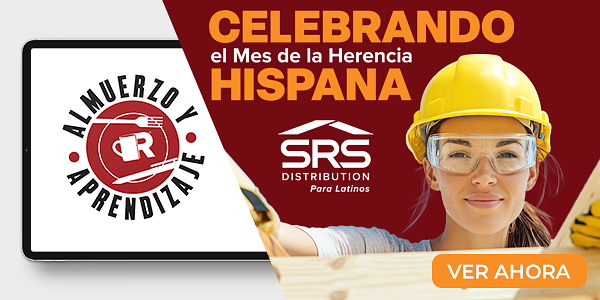
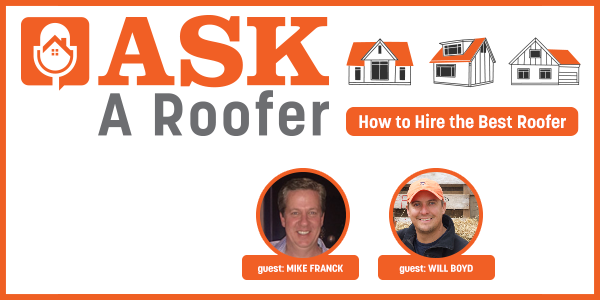




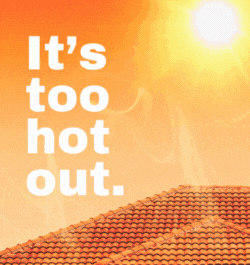

Comments
Leave a Reply
Have an account? Login to leave a comment!
Sign In